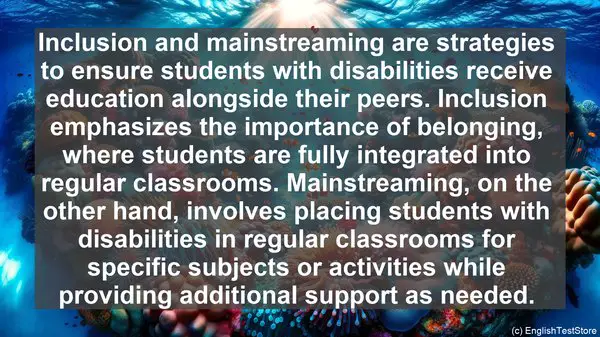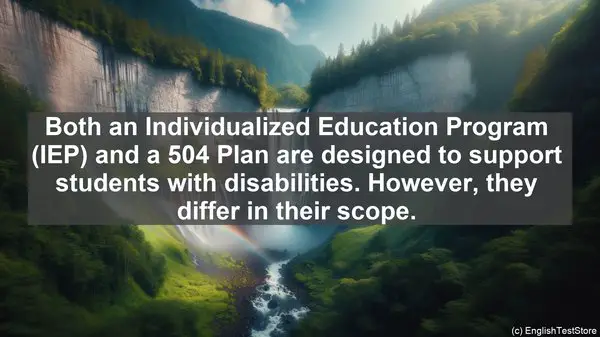Introduction: The Importance of Language in Special Education
As you know, language plays a crucial role in special education. It helps us express our thoughts, understand others, and build meaningful connections. However, there are some words that often cause confusion. Today, we’ll explore the top 10 commonly confused words in special education.
1. Accommodation vs. Modification
Accommodation and modification are two terms often used in Individualized Education Programs (IEPs). While both aim to support students, they differ in their approach. An accommodation is a change in how a student learns, such as extra time or a quiet environment. On the other hand, a modification involves altering the curriculum itself, like simplifying content or adjusting grading criteria.
2. Inclusion vs. Mainstreaming
Inclusion and mainstreaming are strategies to ensure students with disabilities receive education alongside their peers. Inclusion emphasizes the importance of belonging, where students are fully integrated into regular classrooms. Mainstreaming, on the other hand, involves placing students with disabilities in regular classrooms for specific subjects or activities while providing additional support as needed.
3. IEP vs. 504 Plan
Both an Individualized Education Program (IEP) and a 504 Plan are designed to support students with disabilities. However, they differ in their scope. An IEP is a comprehensive plan that includes specific academic goals, accommodations, and services. A 504 Plan, on the other hand, focuses on accommodations and support that enable a student to access the general curriculum.
4. Speech Disorder vs. Language Disorder
While speech and language disorders both affect communication, they are distinct. A speech disorder refers to difficulties with articulation, fluency, or voice production. In contrast, a language disorder involves challenges with understanding or using words, sentences, or gestures to communicate effectively.
5. Dyslexia vs. Dysgraphia
Dyslexia and dysgraphia are specific learning disabilities. Dyslexia primarily affects reading, making it challenging to decode words, recognize sight words, or comprehend text. Dysgraphia, on the other hand, impacts writing, leading to difficulties with handwriting, spelling, and organizing thoughts on paper.

6. Sensory Integration Disorder vs. Autism Spectrum Disorder
Sensory Integration Disorder (SID) and Autism Spectrum Disorder (ASD) are often associated with sensory challenges. SID refers to difficulties in processing and responding to sensory information, such as touch, sound, or movement. ASD, on the other hand, is a neurodevelopmental condition characterized by challenges in social interaction, communication, and repetitive behaviors.
7. Paraprofessional vs. Special Education Teacher
In special education settings, both paraprofessionals and special education teachers play vital roles. A paraprofessional, also known as an instructional aide, works under the guidance of a teacher and provides support to individual students or small groups. A special education teacher, on the other hand, is responsible for planning and delivering instruction, developing IEPs, and collaborating with other professionals.
8. Transition Plan vs. Graduation Plan
As students approach the end of their special education journey, transition and graduation plans come into focus. A transition plan outlines the steps and supports needed for a student’s successful transition from school to post-school activities, such as higher education or employment. A graduation plan, on the other hand, focuses on meeting the requirements for a high school diploma or certificate of completion.
9. Assistive Technology vs. Augmentative and Alternative Communication (AAC)
Assistive technology and Augmentative and Alternative Communication (AAC) are tools that support students with disabilities. Assistive technology includes devices or software that enhance learning or accessibility, such as text-to-speech software or adaptive keyboards. AAC, on the other hand, specifically refers to tools and strategies that help individuals with limited or no speech to communicate, such as picture-based systems or speech-generating devices.
10. Differentiated Instruction vs. Universal Design for Learning (UDL)
Both differentiated instruction and Universal Design for Learning (UDL) aim to meet the diverse needs of students. Differentiated instruction involves tailoring instruction, tasks, or assessments to match a student’s strengths, interests, or learning preferences. UDL, on the other hand, is a proactive approach that involves designing instruction and materials from the outset to be accessible and engaging for all learners.

